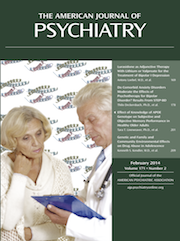Development of Schizoaffective Psychosis in the Course of a Long-Term Occupation as Spiritual Healer: Coincidence or Causality?
Abstract
Psychotic reactions in the context of meditation and esoteric practices have been described in the psychiatric literature. In most cases, these psychotic conditions are transient and do not lead to functional impairment. The authors present the case of a 46-year-old woman who had worked as a spiritual healer for several years and, in the course of this occupation, increasingly developed a highly specific configuration of psychotic symptoms (all of which could be convincingly traced back to the formerly used spiritual techniques) along with depressive symptoms and severe functional impairment. The differential diagnosis was initially complicated by the relative conformity of the patient’s psychotic symptoms with her occupational practices and the absence of other, more typical, symptoms of schizophrenia. Only a thorough anamnesis with another spiritual healer and precise identification of psychopathology helped to disentangle the merely uncommon from the pathologic features of this case. Possible mechanisms of psychotogenesis are discussed in light of the literature and the specific features of the presented case. Although a single case report cannot prove a causal link between spiritual healing and development of psychosis, the patient’s specific psychopathology, with preeminently disturbed self-experience, and its consistency with the patient’s spiritual practices suggest at least a contributory role in this case.



